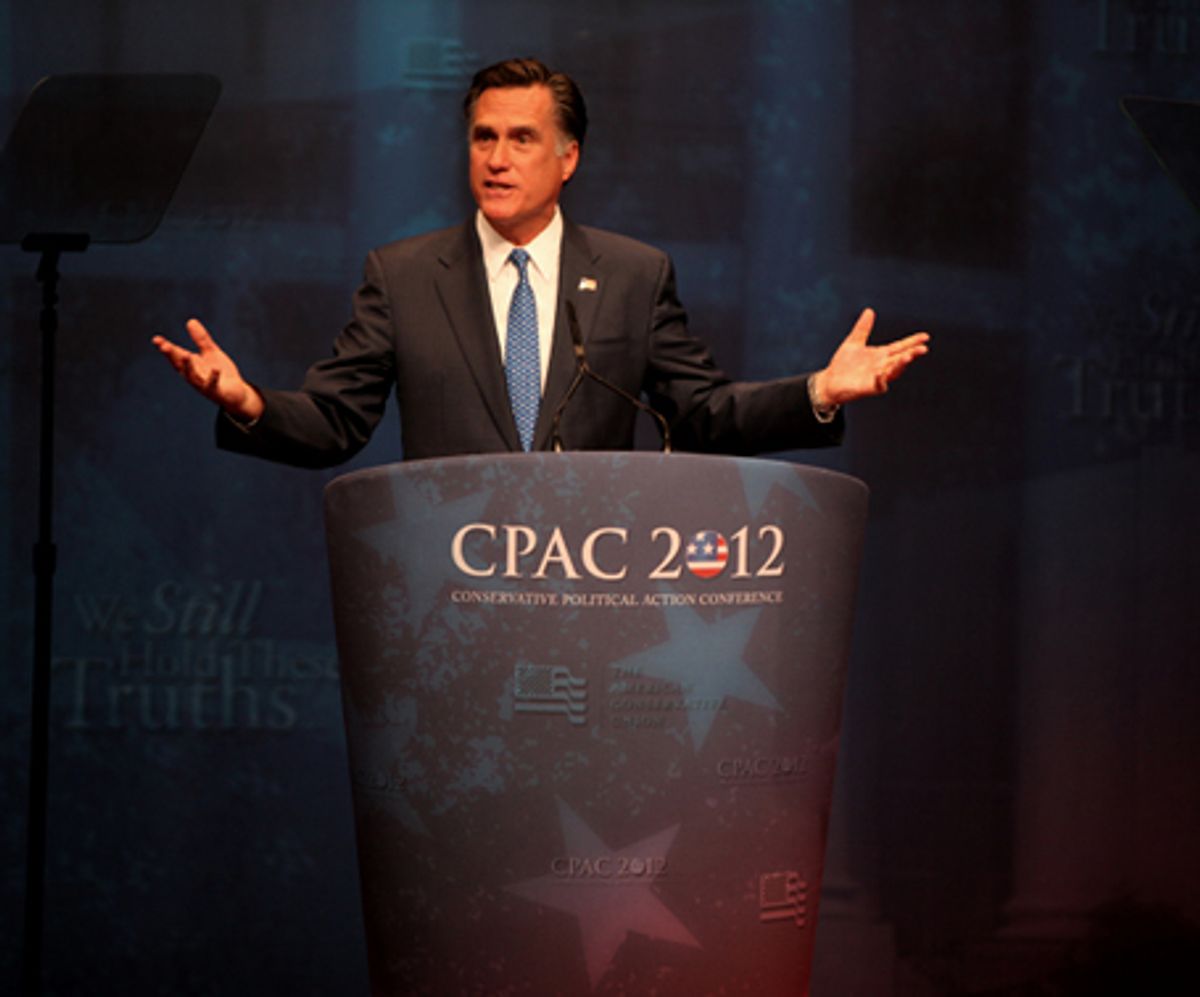Republican presidential candidate Mitt Romney unveiled his energy plan today, a week before the G.O.P. convention gets underway in Tampa. The plan seems to stick pretty carefully to conservative energy doctrine, and sets out an ambitious goal of U.S. energy independence—that is, get all energy needs from home (and Canada)—by 2020. Here are a few of the major points of the Romney plan:
- Take permitting for drilling and mining on federal lands out of federal hands and give that power to the states.
Romney would cede controls currently wielded by the Bureau of Land Management (BLM) to the states, with state permitting processes "deemed to satisfy all requirements of federal law." This would be a fairly massive change in how the U.S. energy business is done; the BLM is currently responsible for 700 million acres of "mineral estate," with more than 12 million of those producing oil and gas in 2011 and another huge chunk producing coal. Romney's plan complains of slowed permitting for fossil fuel exploration under President Obama, but it is worth noting that the country now imports far less of its liquid fuel needs than under President Bush. Also, the Department of the Interior has worked hard to speed up permitting for solar and wind projects on federal land; under the previous President, no such projects received the go-ahead.
- "Aggressively" open new offshore areas for oil drilling.
The plan calls for establishing a five-year offshore leasing plan with a focus on areas that have never seen offshore drilling, such as the coasts of Virginia and the Carolinas. According to Romney, "offshore oil production declined 14 percent last year and production in the Gulf of Mexico this year will be 25 percent below what had been expected before the Obama policies took effect." There are hints of neither irony nor the BP oil spill, beyond a small-font reference to "the accident" and how Obama instituted an "illegal" moratorium on offshore drilling of new wells in 2010.
- Establish a North American energy partnership, with Keystone XL as the backdrop
The ongoing fight over the pipeline that would carry tar sands oil from Alberta into the United States across the Ogallala Aquifer would apparently end quickly if Romney had his way. He would approve the pipeline project immediately, in spite of the environmental concerns raised by both the pipeline itself and the dirty, thick oil that it will carry, and would "institute fast-track regulatory approval processes for cross-border pipelines and other infrastructure." Romney's plan notes that the U.S. still imports more oil from OPEC than from Canada and Mexico; this is technically true, though it is surprisingly close considering OPEC imports come from 11 countries including Saudi Arabia. In May 2012 the score was 144 million barrels from OPEC as a whole and 124 million from our nearest neighbors.
- Completely rethink environmental regulations
Romney would "implement measured reforms of environmental statutes and regulations." The subtext here is that he would like to get rid of mercury emissions standards and the recently passed regulation that will make building new coal power plants difficult. Of course, new coal plants have been getting less and less likely even without the regulations, and most worry that the coal will be dug up and shipped to Asia even without new plants in the U.S.
The Romney plan also calls for ends to renewable energy subsidies (with no mention of the billions that would continue to go to fossil fuel industries); claims that Obama's policies are solely responsible for job losses and energy dependence; and would speed the approval of new nuclear reactor designs and licensing of new nuclear sites to within a scant two years. It is basically a how-to guide for angering environmentalists. It'll be interesting to see how much support these ideas garner over the next couple of months.
Image: Gage Skidmore/Commons
Dave Levitan is the science writer for FactCheck.org, where he investigates the false and misleading claims about science that U.S. politicians occasionally make.




